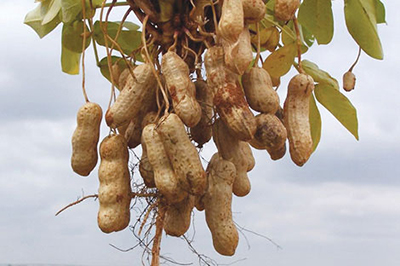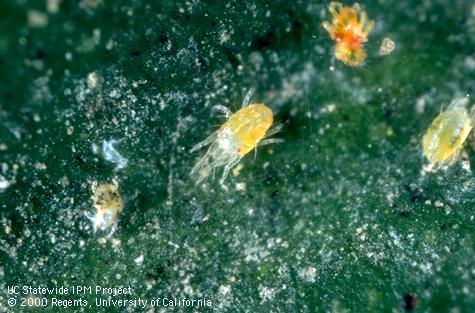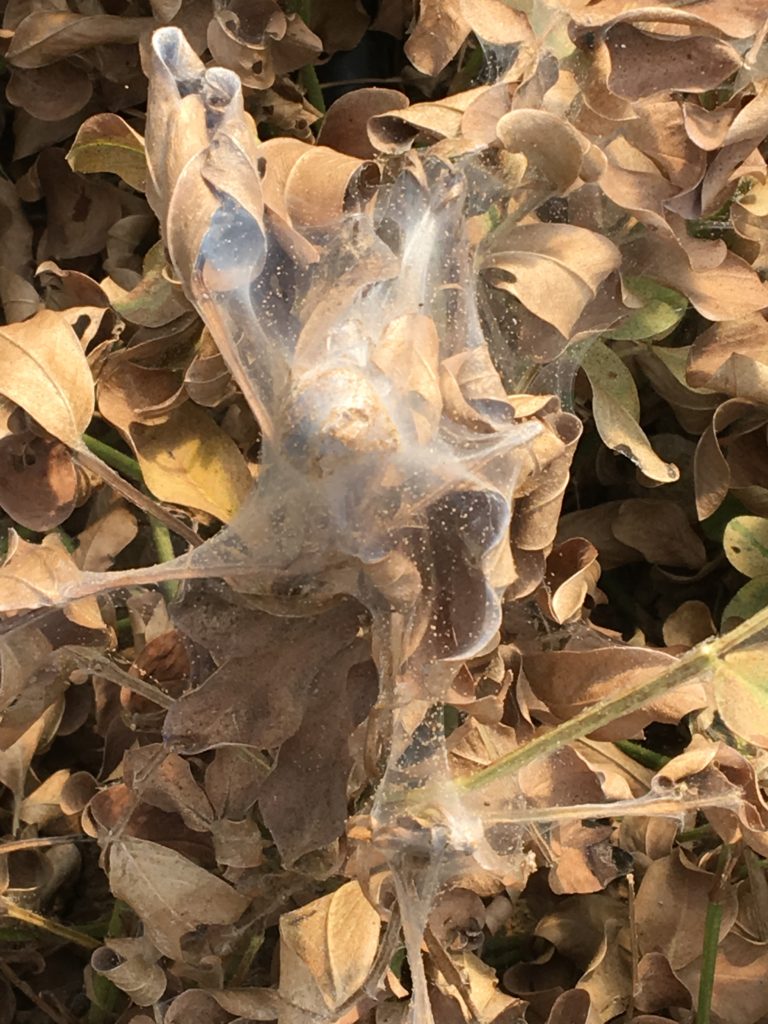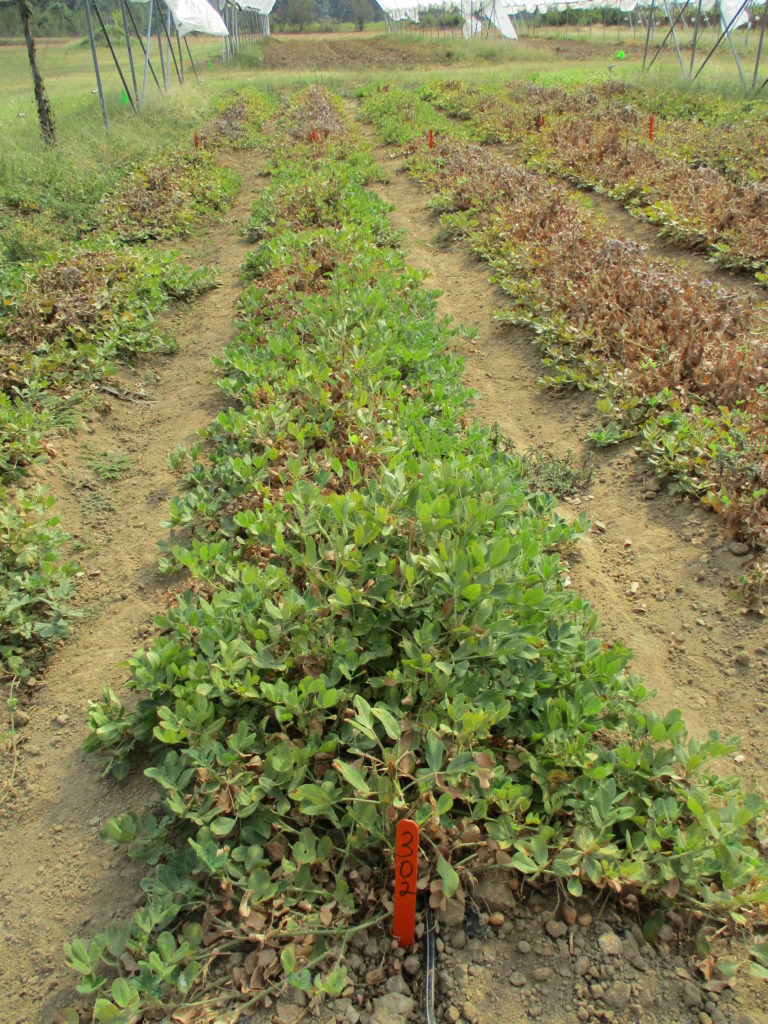With a limited number of miticides registered for use on peanuts, the best method to control spider mites is to minimize infestations.

In these uncertain times, people look to comfort foods for something that tastes good and makes them feel good. One of these foods is peanut butter, which the HuffPost listed as one of the top 25 best comfort foods. According to the National Peanut Board, the per capita consumption of peanuts has increased to an all-time high of 7.6 pounds. NPB reports that while the COVID-19 pandemic played a role in increased sales and usage over the last five months, peanut consumption was well on its way to an increase before the global health crisis.
The United States is the world’s fourth-largest peanut producer following China, India, and Nigeria. Scott Monfort, extension peanut agronomist at the University of Georgia, estimates U.S. peanut plantings for 2020 was nearly 1.6 million acres, which is a 12 percent increase over last year. In 2019, Georgia grew the most peanuts followed by Florida, Alabama, Texas, North Carolina, and South Carolina. There are about 7,000 peanut farmers in the major peanut producing regions of the US. The Southeast region, which includes Georgia, Florida, Alabama, and Mississippi, produces about 65 percent of all US-grown peanuts.

Need for more spider mite controls
With the increasing production of peanuts, farmers are looking for better pest controls, including both traditional chemical insecticides and biopesticides. The registration of the miticide fenpyroximate through the IR-4 Project provides peanut farmers with an additional control tool.
Ayanava Majumdar, entomologist and extension professor at Auburn University in Auburn, AL, conducted efficacy studies on fenpyroximate for control of spider mites on peanuts.
“I did not directly participate in the research studies for the registration of fenpyroximate on peanuts through IR-4,” Majumdar said. “However, for the last three years I was funded by grants from the National Peanut Board and the Alabama Peanut Producers Association to study the effectiveness of fenpyroximate and alternative miticides. The research generated localized information that was published in journals and support letters on behalf of the peanut industry.
“Prior to the registration of fenpyroximate there was only one miticide chemistry that was labeled for use on peanuts. This is unlike vegetable crops, which have a number of miticides labeled for use. That is why the peanut farmers funded the research to find additional miticides. I’m looking at traditional chemicals, biopesticides, and organic products.”

Late season infestations
The most common species of spider mite that infests peanuts in Alabama is the two-spotted spider mite (Tetranychus urticae) with occasional flare-ups of red spider mites (Tetranychus tumidellus). Majumdar said there are two common ways that peanuts become infested with spider mites in Alabama.
“Spider mites are not usually seen on young peanut plants,” he said. “They are seen more often late in the season which can affect the harvest. Late July, August, and September is when the weather is normally hot and dry. This is typically when spider mites can be a major problem. This is also a critical period for peanuts as the pods are filling.
“Late in the season is also when farmers are generally applying synthetic pyrethroids for caterpillar control. These insecticides also kill the beneficial mites that can help control spider mites. This loss of predaceous mites can help lead to spider mite infestations.”

Spider mite prevention options
For peanut farmers who use overhead irrigation, Majumdar said watering in a timely manner can be an effective way of reducing spider mite populations.
“Drought conditions can promote spider mite infestations so overhead irrigation can help to reduce those outbreaks,” he said. “Another pest that can be a major problem under drought conditions is the lesser cornstalk borer (Elasmopalpus lignosellus). Irrigation is one of the best ways to reduce the borer from feeding on the plants and promoting rapid development of the peanut pods. For both spider mites and the borer it helps to turn on the irrigation water on a need-based schedule.”
Majumdar said it is critical that farmers scout their fields before and after plantings are done.
“Farmers should be looking for different pests, not just spider mites,” he said. “That’s how they will know if the insecticides they’ve applied have been effective. It is the same with caterpillar control.
“I have a chart that I use to track pest infestations. I track spider mite infestations when they are severe and the impact miticide applications have on the populations. For caterpillars, I recommend that farmers use selective insecticides, including insect growth regulators, to avoid an increase in spider mite populations and to reduce loss of beneficial mites. In field plantings there are higher chances of re-infestation of spider mites where insecticide applications negate the effectiveness of natural predators.”
When Majumdar receives a spider mite complaint from a farmer, he recommends that the farmer reduce the mowing of grass around the field and limit the movement of equipment in the field.
“Spider mites are in the field dust and when equipment is moved the mites can hitch a ride on the equipment or ride the air and move around,” he said. “If the overall movement in the field is reduced in those hot spots where spider mites are found that can help to prevent their spread.
“It may be difficult for large farmers, but they can treat those areas of the field where spider mite infestations have been detected. More farmers typically do an area-wide spraying or treat a whole field. I am constantly reminding farmers not to overuse chemicals and to switch to newer selective insecticides and miticides to reduce environmental backlash.”
For more: Ayanava Majumdar, Auburn University, Department of Entomology and Plant Pathology; azm0024@auburn.edu;
https://enpp.auburn.edu/ayanava-majumdar;
https://academic.oup.com/amt/article/45/1/tsaa040/5809724;
https://www.aces.edu/blog/topics/ipm-farming/alabama-ipm-communicator-newsletter/;
https://www.facebook.com/Alabama-Peanut-IPM-Program-166598770047038/.
PR# 11748 Peanut (Two-spotted spider mite)
David Kuack is a freelance technical writer in Fort Worth, Texas; dkuack@gmail.com.
